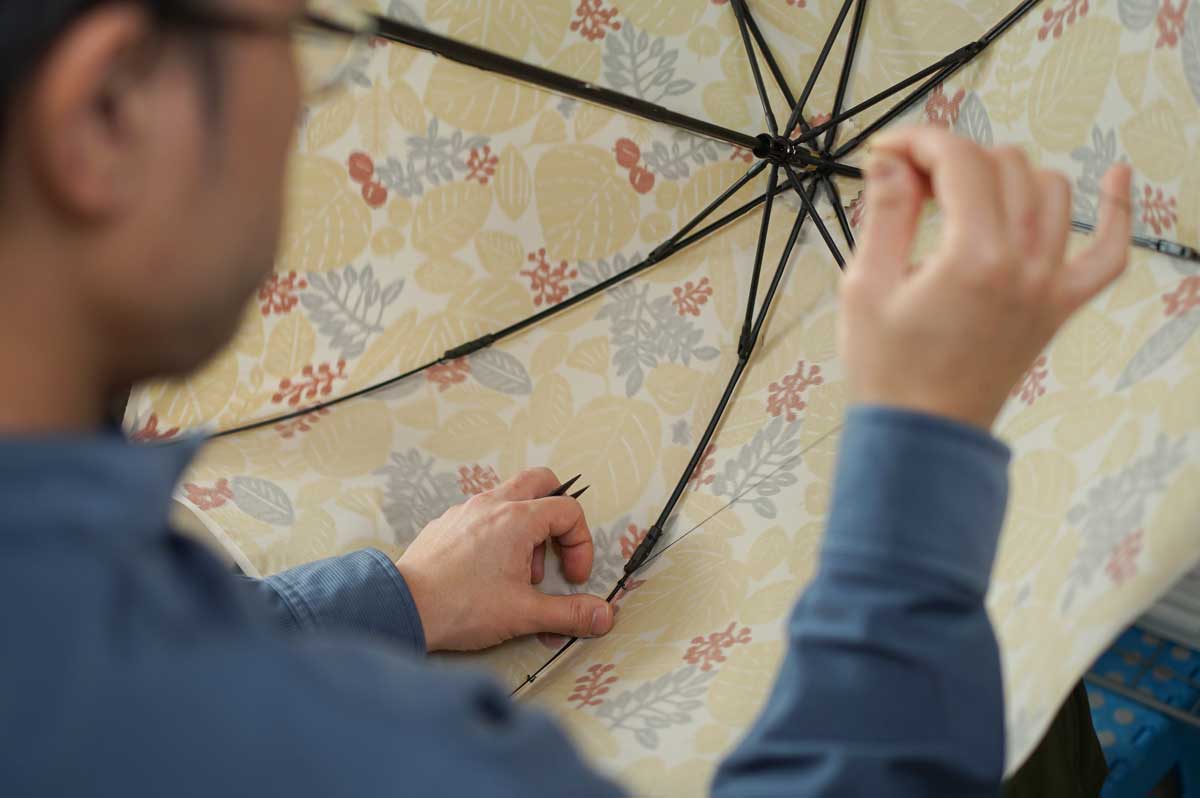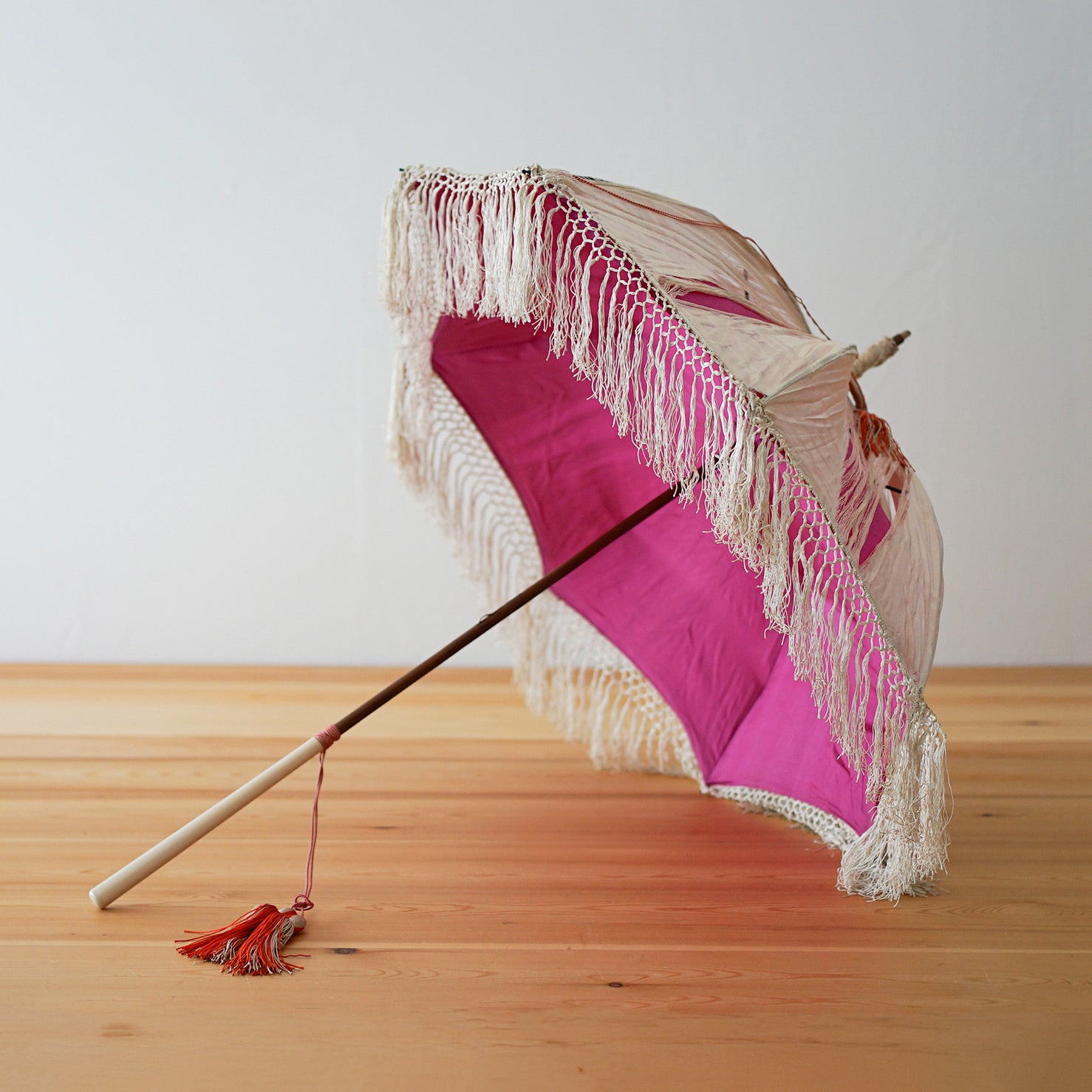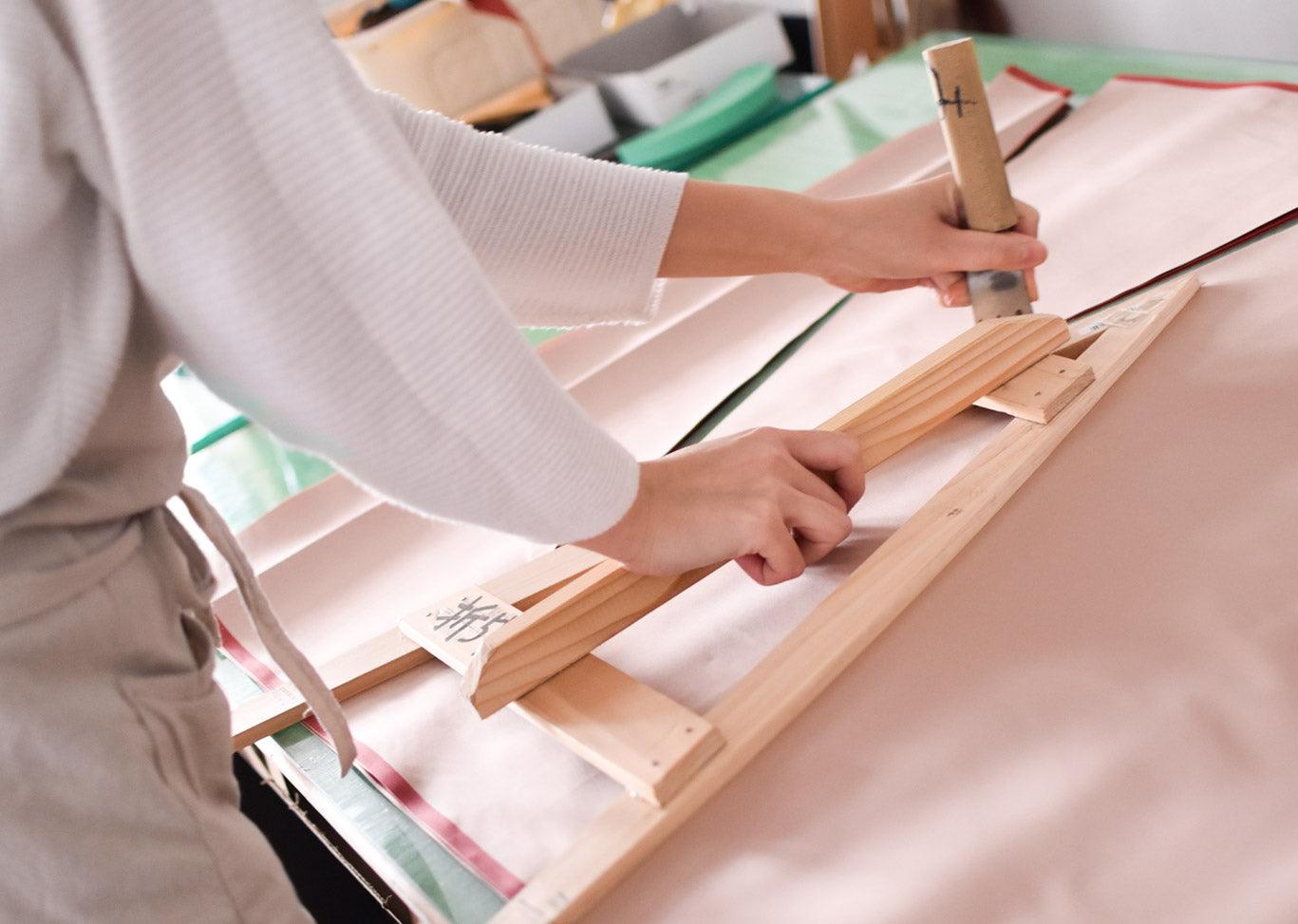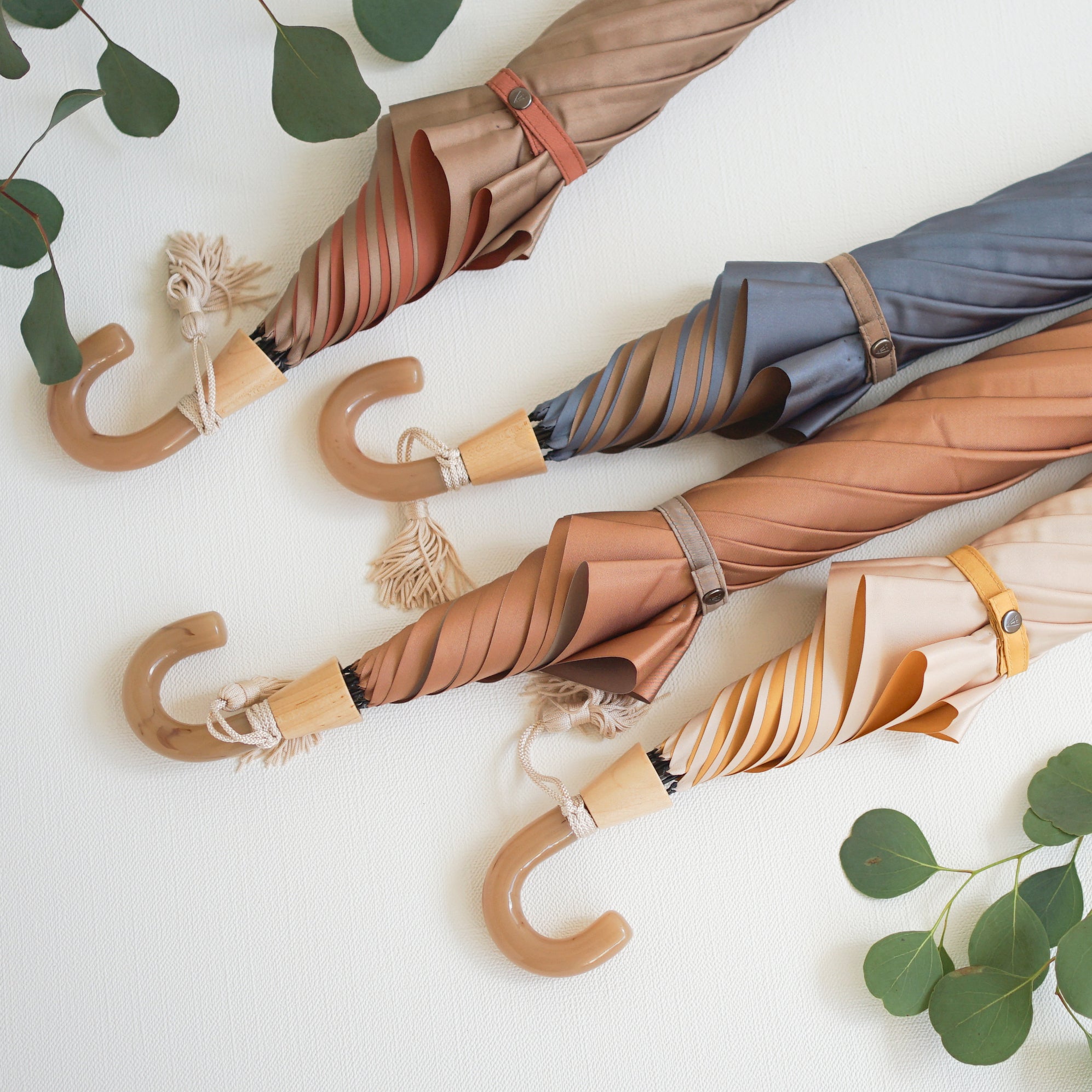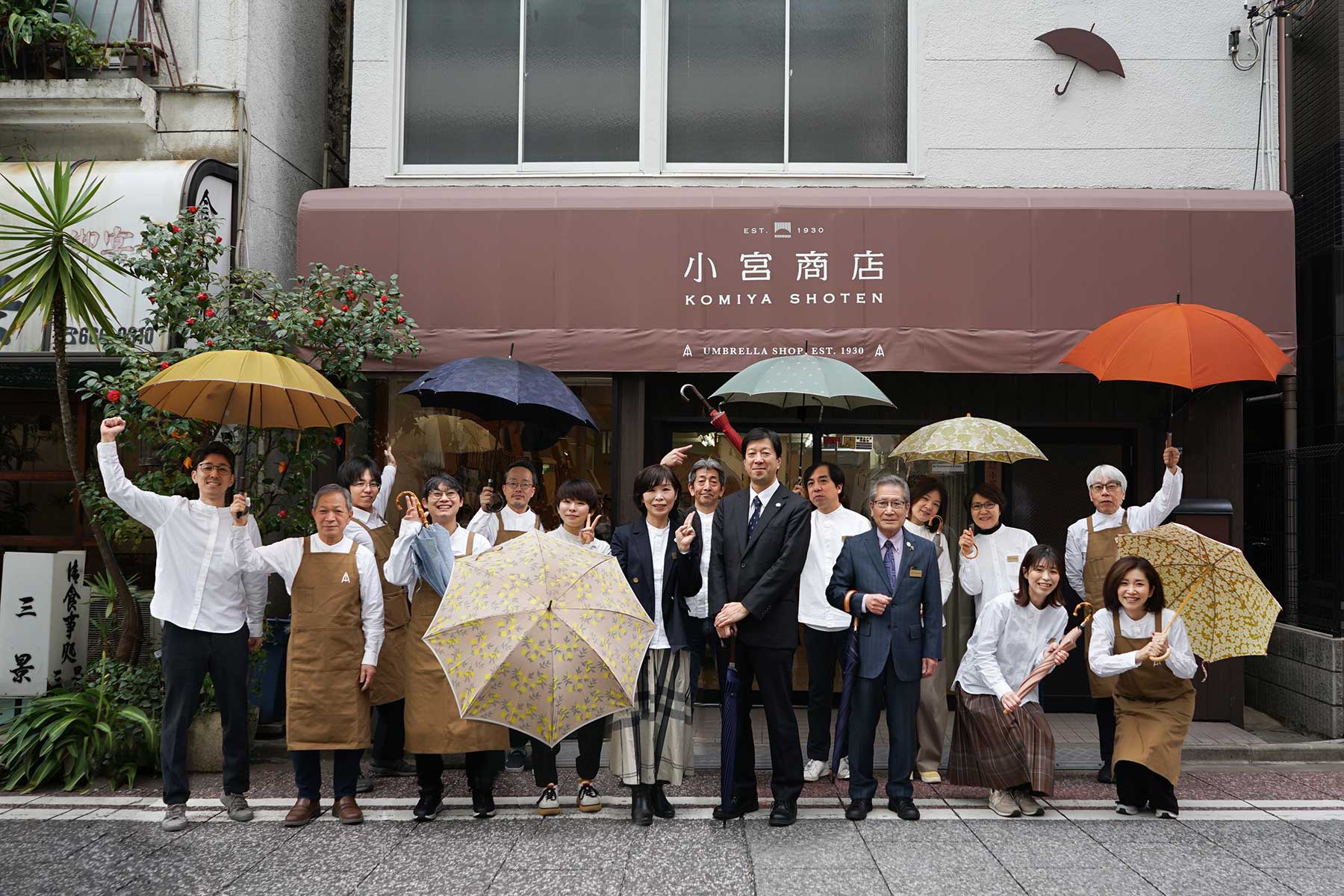Three craftsmen from Komiya Shoten will be exhibiting at the "21st Century Art Borderless Exhibition Takumi TOKYO 2023," which brings together artists from the fields of traditional crafts with the theme of "Takumi."
While the three students worked on making regular umbrellas, they also went through a process of trial and error to create a piece of art.
This time, we would like to introduce the works of each of these three artists.
Works by craftsman Kazuyuki Tanaka

This is a collaborative work with contemporary dyeing artist "KODAI YASUNO," who has launched a unique apparel brand that combines traditional Japanese dyeing techniques with cutting-edge design.
This time, I created two items: tie-dyed and wax-dyed.
For more information about KODAI YASUNO, please click here.

The photo on the left is indigo dyeing and the photo on the right is wax-resist dyeing.
The plain white cotton umbrella cover was dyed using KODAI YASUNO's dyeing techniques, resulting in an umbrella with a modern design despite being dyed using traditional methods.
In addition, rather than cutting the dyed fabric, the dyeing was done on the fabric at the cover stage after the inner stitching was completed, so the design still looks continuous even after the umbrella is made.

The umbrella was made with particular attention to curves, with the wooden mold being remade many times to create a beautiful silhouette.
In addition, the handles have also been dyed with indigo, giving the piece a beautiful, unified finish.

This parasol is full of artisan spirit, combining KODAI YASUNO's dyeing techniques with Tanaka's umbrella-making techniques.
Works by craftsman Shoko Tanaka

This piece has a transparent quality, almost like stained glass, and was made using a Korean patchwork technique called "pojagi," in which linen fabric is cut into squares of different sizes and sewn together to make a single piece of cloth.
The linen used is ramie linen, which has thick fibers and high strength, so it is breathable and feels cool when used as a parasol, but it is a fabric that is difficult to pass a needle through and is difficult to sew together.

This is what the umbrella looks like from the front.
The process of sewing together such complicated fabrics is called "pojagi," and involves adjusting the length and shape of the squares while interlocking the seam allowances of the overlapping pieces of fabric and joining them together with fine stitches.
It takes a very long time to complete a single piece of fabric because these processes are used to ensure that the stitches look beautiful from both the front and the back.

The stitching is just as beautiful when viewed from the back as it is from the front.
Once eight pieces of cloth are completed, the next step is to sew them into an umbrella.
We made many adjustments to ensure the shape was just right, and when we finally completed the wooden mold and cut the fabric to fit it, we had to carefully adjust the thread as it was difficult to pass the needle through, and finally completed the piece.

When folded, the umbrella appears to be three colors, but when opened, a variety of colors jump out at you, making it a dazzling parasol.
Craftsman Itami's work "Rokumei Ombre"

This is a reproduction of the Japanese-made Western parasol "Rokumei Ombre," which was used as a luxury accessory during the Rokumeikan period in the early Meiji period.
Using the few remaining documents, we began by searching for materials, then went on to recreate an umbrella that was made as part of Komiya Shoten's project, taking several years of trial and error to perfect the fine embroidery, parts, and shape and curve of the umbrella.

This is the actual umbrella that was used at the time.
The outer fabric is pure silk twill, and on the inside, silk satin fabric is layered in a way that sandwiches the bones.
Even the braided cord decorations on the handles have been meticulously reproduced by hand by modern artisans.

Click here to learn more about the Deer Crying Ombrell.
https://www.komiyakasa.jp/rokumei/
The above three works are on display at the Tokyo Metropolitan Art Museum.
All of the pieces are planned and designed by the craftsmen themselves, and are filled with their own individual passion.
Admission is free. If you are interested, please come and see the masterpieces of our craftsmen.
Exhibition Overview
Tokyo Metropolitan Art Museum 1F 3rd Exhibition Room
June 15-20, 2023
9:30-17:30 (entrance until 17:00)


